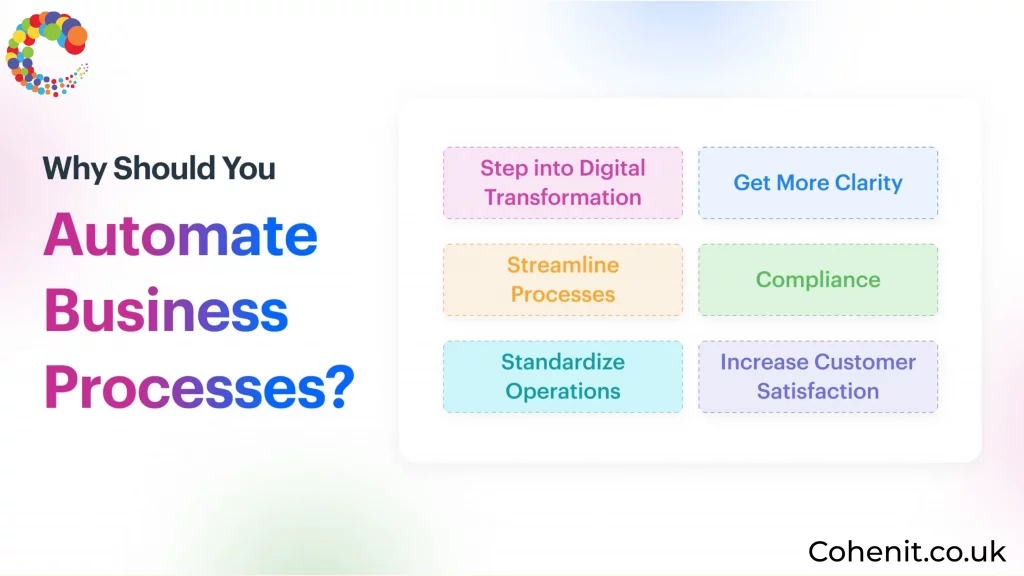In today’s fast-paced business landscape in the UK, integration and automation have become essential strategies for staying competitive and efficient. Integrating and automating business processes, also known as ‘integrate and automate business processes,’ can help organizations reduce manual work, enhance productivity, and improve overall operational efficiency. In this article, we will explore the benefits of integrating and automating business processes and provide practical steps for achieving a streamlined and more productive workflow.
The Power of Integration and Automation:
Integration refers to the process of connecting different software applications and systems, allowing them to share data and communicate seamlessly. Automation, on the other hand, involves using technology to perform repetitive tasks and workflows without manual intervention. When these two concepts are combined, they create a powerful synergy that transforms how businesses operate.
Benefits of Integration and Automation:
- Efficiency and Productivity: Integrating and automating business processes reduce the time and effort required to perform routine tasks, freeing up employees to focus on more strategic and value-added activities.
- Accuracy and Consistency: Automation reduces the risk of human errors, ensuring that processes are executed consistently and accurately.
- Cost Savings: By eliminating manual work and reducing errors, integration and automation can lead to significant cost savings in terms of labor, time, and resources.
- Improved Customer Experience: Streamlined processes enable faster response times and better customer service, ultimately leading to higher customer satisfaction.
- Data Accessibility: Integration allows for real-time data sharing, providing employees with access to up-to-date information whenever they need it.
- Scalability: Automated processes can easily scale with your business, accommodating increased workloads without a proportional increase in resources.

Steps to Integrate and Automate Business Processes:
1. Identify Key Processes:
Begin by identifying the business processes that can benefit the most from integration and automation. Focus on areas where manual tasks are time-consuming, error-prone, or repetitive.
2. Set Clear Objectives:
Define specific goals for each process you plan to automate and integrate. What do you aim to achieve? Whether it’s reducing processing time, improving data accuracy, or enhancing customer interactions, clear objectives will guide your efforts.
3. Choose the Right Tools:
Select integration and automation tools that align with your business needs and objectives. There are various software solutions and platforms available, so research thoroughly to find the best fit.
4. Design Workflows:
Map out the workflows for each process you plan to automate. Consider how data will flow between systems and define the triggers that will initiate automated actions.
5. Develop and Test:
Work with your chosen tools and platforms to develop automation scripts or workflows. Testing is crucial to ensure that everything functions as intended, and it’s a chance to fine-tune processes.
6. Train Your Team:
Provide training to employees who will be using the integrated and automated systems. Ensure they understand how to operate the new processes and address any concerns or questions.
7. Monitor and Optimize:
After implementation, continuously monitor the integrated and automated processes. Gather data and feedback to identify areas for improvement and optimization. Technology evolves, so stay up-to-date with updates and improvements to your tools.
8. Scale and Expand:
As your organization grows, consider expanding the scope of integration and automation. Explore additional processes that can benefit from these strategies, and adapt your workflows accordingly.
Learn also about Build MVP Quickly and Cheaply.
Conclusion:
Integrating and automating business processes, including integrate and automate business processes, is not just a modern trend; it’s a necessity for businesses looking to thrive in today’s competitive landscape. By identifying, setting objectives, and carefully implementing these strategies, you can unlock increased efficiency, reduced costs, and improved customer experiences. Embrace integration and automation to streamline your operations and position your business for long-term success.
